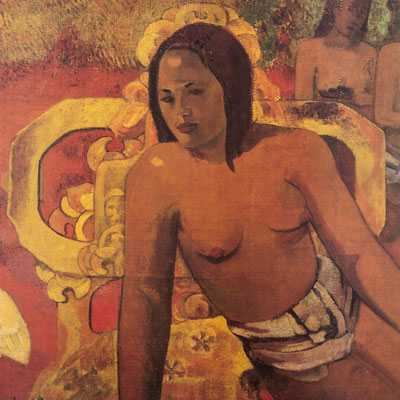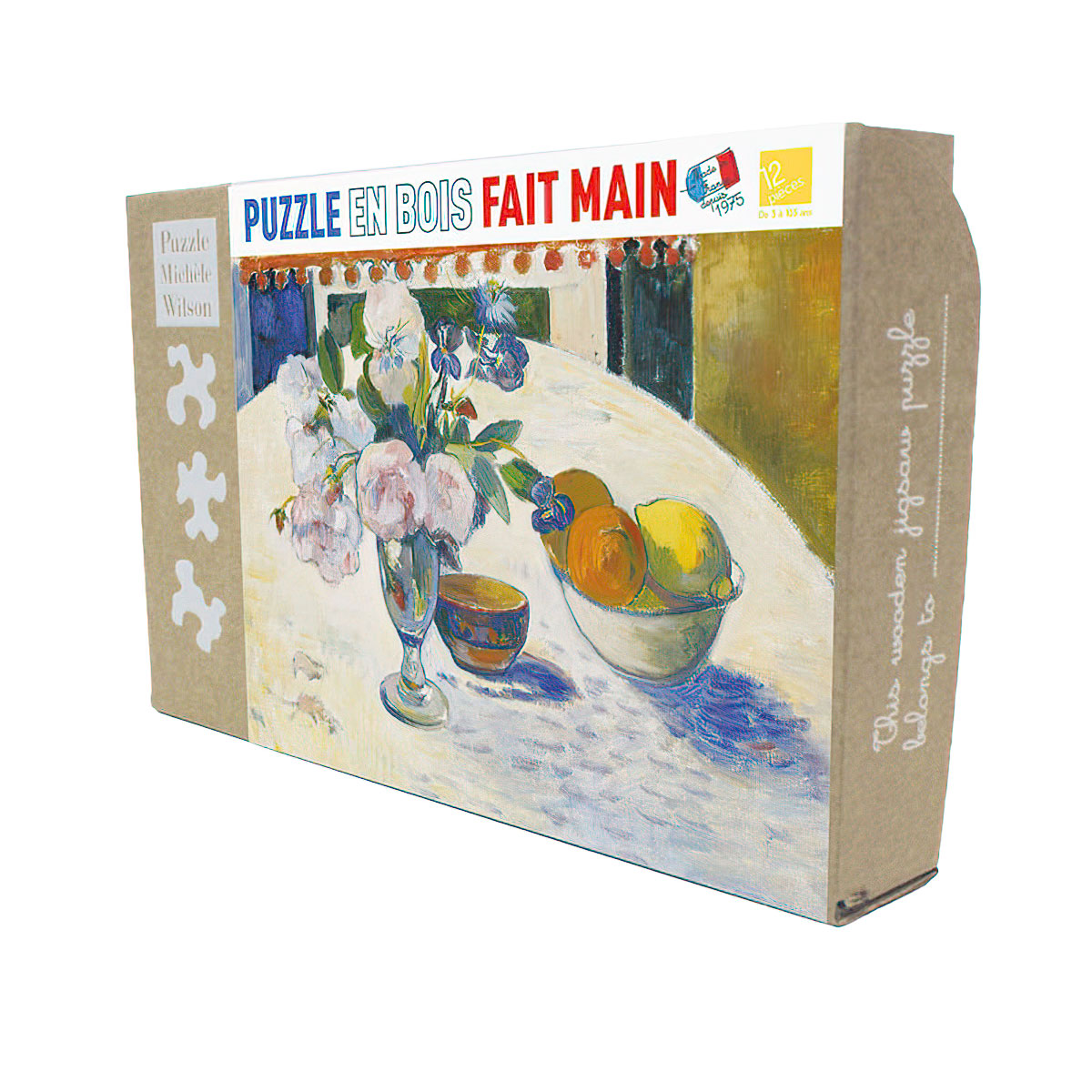Tel : (+33) 4 94 63 18 08
9am - 6pm from Monday to Saturday
All products Paul Gauguin • Products of the topic Children
Paul Gauguin Wooden Puzzle for kids : Flowers and Fruit Bowl
REF : PUZ-WIL-PG-01
In stock
Only 1 in stock
Unavailable
23,00 €
Puzzle Paul Gauguin : "Flowers and Fruit Bowl"
12 Pieces
Wooden Puzzle for kids : 12 pieces (from 3 years)
Publisher : Michèle Wilson
Dimensions of the puzzle once completed : 29 x 21 cm
Post-impressionism
The post-impressionist period in painting (between the end of the 1880s and 1910s) followed the impressionist movement, which took place between the 1860s and 1890s. The post-impressionists took some of the techniques of impressionism, such as painting outdoors and using vibrant colors, but they also sought to go beyond impressionism by exploring new themes and using more structured forms. Among the most well-known post-impressionist artists are Paul Cézanne (1839-1906), Vincent van Gogh (1853-1890), Georges Seurat (1859-1891), and Henri de Toulouse-Lautrec (1864-1901). Paul Cézanne is known for influencing many subsequent artistic movements, including cubism. His paintings emphasize structure and form rather than color and light, as was the case with impressionism. Vincent van Gogh is best known for his vibrant and expressive paintings, which reflect his difficult life and unstable mental state. His paintings are filled with bright colors and sinuous lines, and they had a significant impact on modern painting. Georges Seurat developed a technique called "pointillism," which involves painting with small dots of color rather than brushstrokes. His paintings are characterized by precise use of color and light, and they also influenced cubism. Henri de Toulouse-Lautrec was known for his paintings and advertising posters that featured the nightlife and cabarets of Montmartre in Paris. His works are characterized by their simple and direct style, and they contributed to the popularity of post-impressionist art among the general public. The post-impressionist period also saw the emergence of many other talented artists, such as Paul Gauguin (1848-1903), André Derain (1880-1954), and Raoul Dufy (1877-1953). Although these artists all had unique styles, they were all influenced by impressionism and contributed to the evolution of painting art during this period.
Discover the artist

Gauguin Paul
Paul Gauguin is a French post-impressionist painter, leader of the School of Pont-Aven, who chose to cut himself off from civilization and its barriers by going to live in Polynesia.
After six years in the Navy, Gauguin discovered painting late in life through Camille Pissaro and became passionate about the Impressionists and their revolution.
Adventurer at heart, he paints, travels, apprehends symbolism (which nourishes his work) and the cloisonnism which leads his art towards a synthesis where creation is more important than the restitution of reality.
He left France in 1891 (he would not return there again) first for Tahiti and then the Marquesas Islands. By cutting itself off from the West, it also chooses to free itself from the conventions that hold it back. His painting is released at the same time and he becomes, alone in front of his easel, one of the major painters of his time, one of those who most influenced his contemporaries (Fauves, Cubists, Expressionists).






